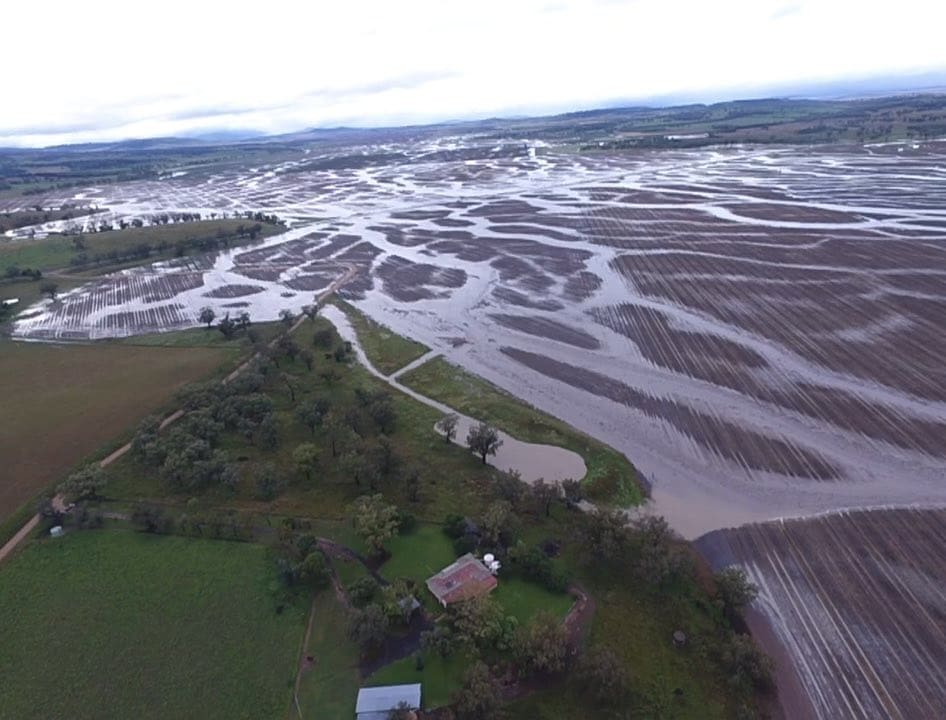
Flooding on the Liverpool Plains has inundated emerging summer crops and interrupted winter crop harvest. (Photo: Ian Carter)
WIDESPREAD rains and flooding throughout the cotton-growing regions of eastern Australia over the past few weeks have had a mixed impact on this season’s emerging crops.
Where the falls have been moderate the extra moisture has been a bonus, but in low-lying areas subject to flooding and waterlogging crops have been set back and, in some cases, destroyed altogether.
Cotton Australia chief executive officer, Adam Kay, said while the industry was still forecasting a national crop this season of around 4.7 million bales, it had been a very challenging start for growers due to the flooding and cool temperatures.
“It is swings and roundabouts. Places like Emerald have some extra water and we will probably see an increase in area in Central Queensland and around the Dawson,” he said.
“It is good news for St George and Dirranbandi. It’s a mixed bag on the Darling Downs. There have been some irrigated and dryland crops abandoned where it has been too wet. We need to see some warm weather now.
“On the Macintyre, Gwydir, Namoi and Upper Namoi it has been a tough start. There has been inundation and something like five per cent of the irrigated area has been let go at this stage and there has been yield impact.
“Places like Bourke and Walgett have seen some extra cotton go in because of the water coming down the river.”
Mr Kay said n the southern areas there had been some inundation of early cotton crops, but it was the cool, tough start to the season that had had the most impact through the southern valleys of New South Wales.
“Everyone is looking for some proper summer weather as soon as we can get it,” he said.
Upper Namoi damage
In north west NSW which has been the epicentre of widespread flooding, CSD extension and development agronomist for the Namoi Valley and Walgett, Bob Ford, said a lot of the damage had yet to be assessed as the water was still subsiding.
“The biggest issue will be with dryland crops that aren’t protected by any banks or structures,” he said.
“It is very poor timing because wheat harvest was well underway and the cotton and sorghum crops were very juvenile.
“The greatest effect has been in the Upper Namoi and Liverpool Plains because they had a lot more rain and flooding. Further down there wasn’t as much rainfall and growers could get the water off the crops before the flood came along.”
In saying that, Mr Ford said the flooding had been prolonged at Wee Waa in the Lower Namoi where the water had covered paddocks for a week and a half and was only moving away slowly.
“We can’t complain about rain after the drought we have had, but it was the year to make up for those years in terms of the wheat crops going five tonnes to the hectare plus. They have now gone from premium wheat crops to feed in a matter of two weeks,” he said.
Grain Central: Get our free cropping news straight to your inbox – Click here

HAVE YOUR SAY